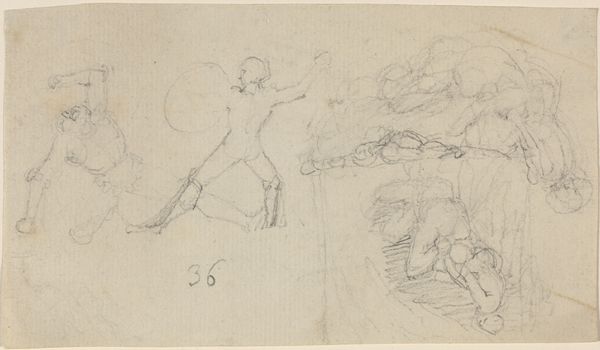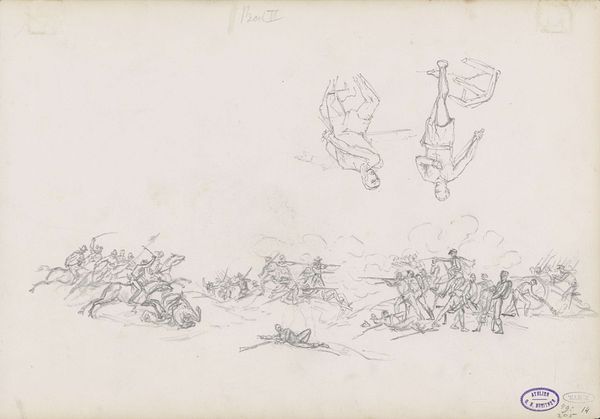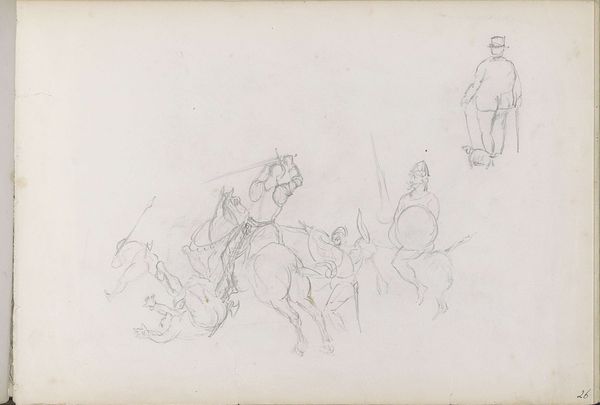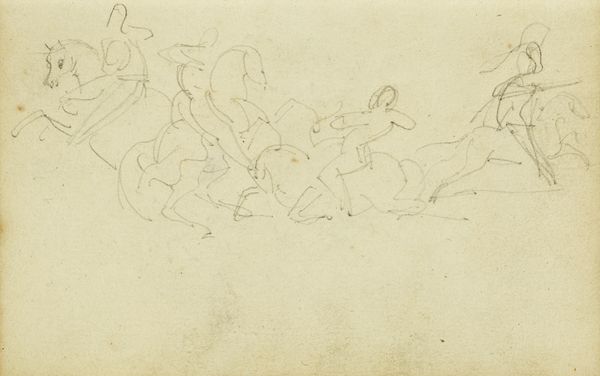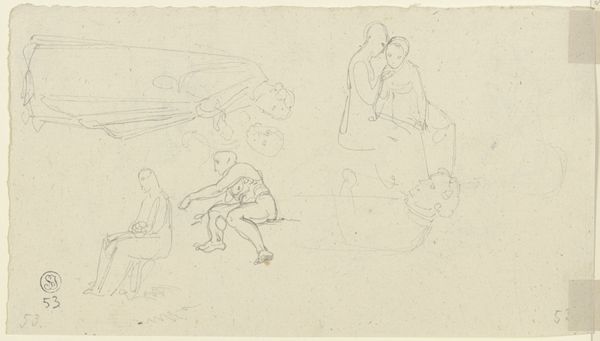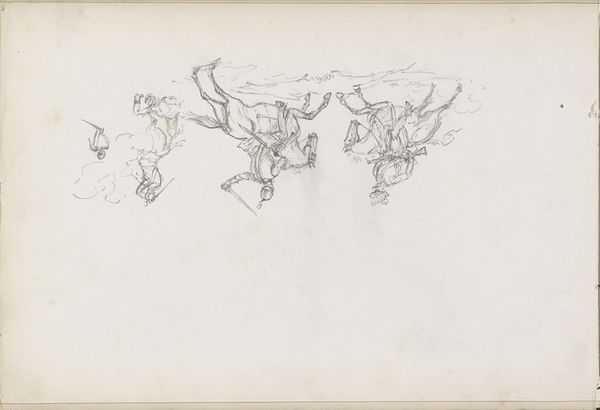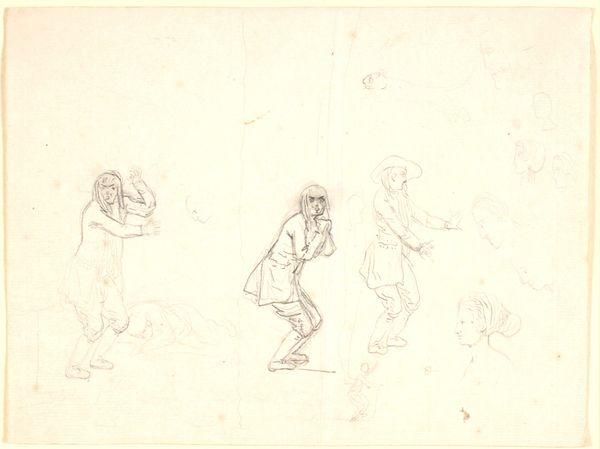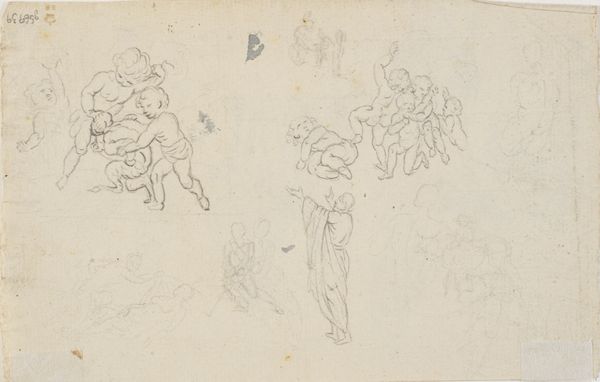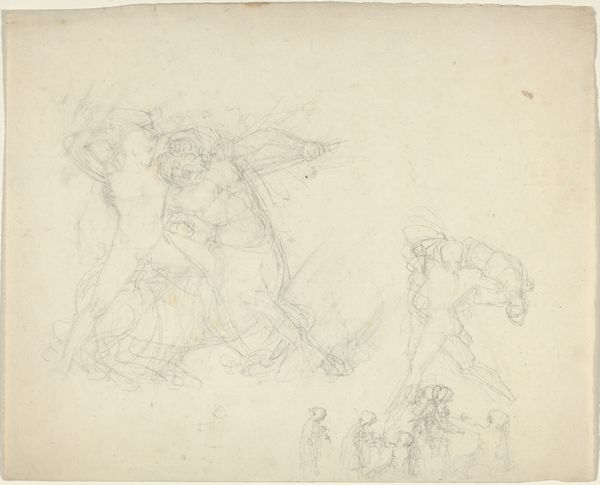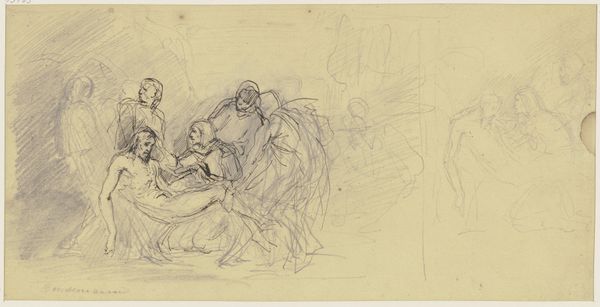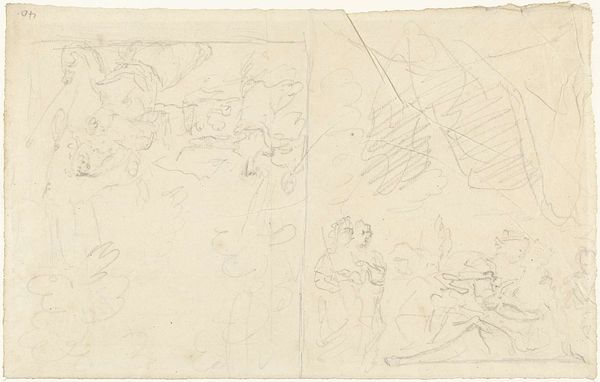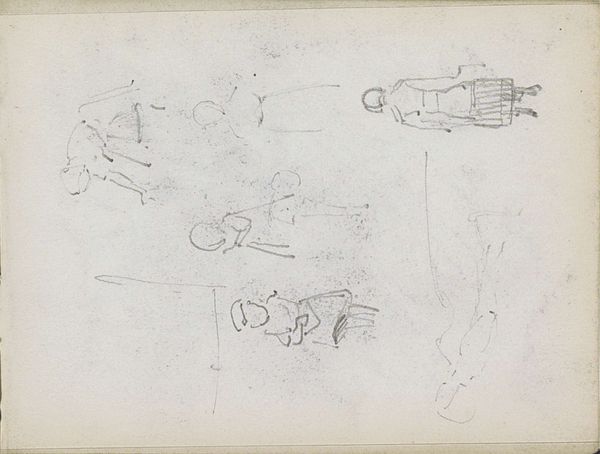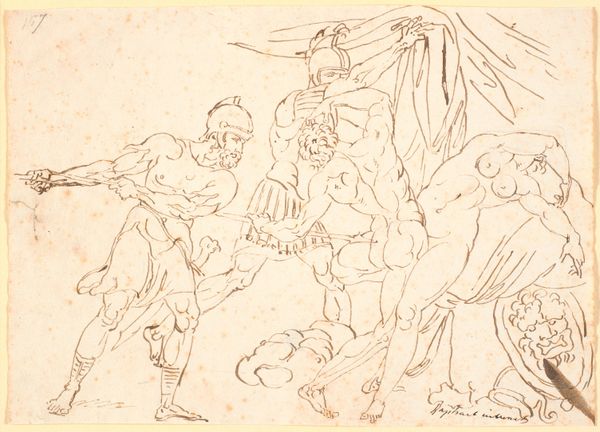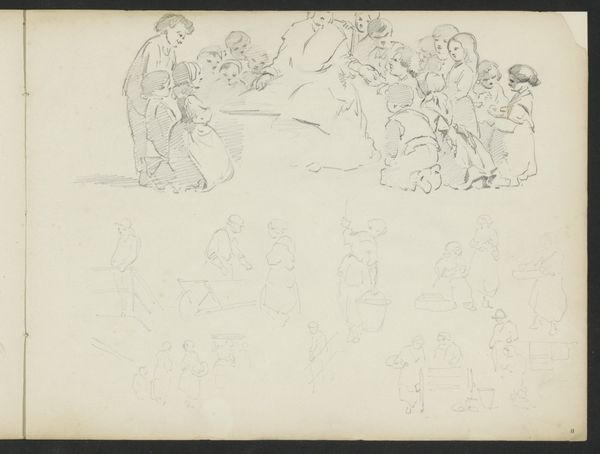
drawing, pencil
#
drawing
#
neoclacissism
#
landscape
#
figuration
#
pencil
#
genre-painting
Dimensions: height 182 mm, width 248 mm
Copyright: Rijks Museum: Open Domain
Curator: Here we have Louis Ducros’ pencil drawing, "Personen bij halte postkoets in Fondi", from 1778. It's currently housed at the Rijksmuseum. I'm struck immediately by the sketchiness, how loose the forms are, almost like a preparatory study of labor around the postcoach halt. Editor: Yes, it’s rather rough, isn't it? Almost dreamlike. My eye is drawn to the figures seemingly in various states of rest and perhaps even inebriation? There’s a group on the right, for instance, tumbling upside down and another reclined, their postures suggesting a symbolic loss of control. What do you make of this implied contrast, the productive versus the unproductive? Curator: Interesting point. Given that the work depicts everyday life around public transportation in 1778, one could infer a direct link to social commentary, how labor and leisure intersect. Think about the stagecoach itself, a novel means of connecting distinct communities, its material presence shaped travel and interactions. Editor: Absolutely, and consider the role of the sheep! Perhaps symbolizing both rural tranquility and impending travel? The sheep as symbols of peace, but they’re placed right next to signs of human commotion. Is Ducros suggesting that the new world of faster transportation risks upsetting this quiet equilibrium? The reclining figures appear oblivious, or perhaps resisting this change. Curator: Or maybe partaking of the liquid rewards it facilitates! To a viewer of that time, genre scenes held specific coded signals relating to their place in a social system, so there's likely deeper commentary embedded in its consumption and distribution as material culture. Editor: Yes, how each element speaks beyond its literal form is essential, and there may well be multiple valid layers in each sign. It encourages us to look at a time of cultural shifting, with people seemingly divided between embracing the change, versus simply falling asleep or even drinking as a consequence of it. Curator: Precisely. It gives us cause to think further about this society and its means. I wonder how different it all seemed only a generation later. Editor: And how those lasting anxieties manifest differently in modern symbol systems today! It’s all a thread through history.
Comments
No comments
Be the first to comment and join the conversation on the ultimate creative platform.
